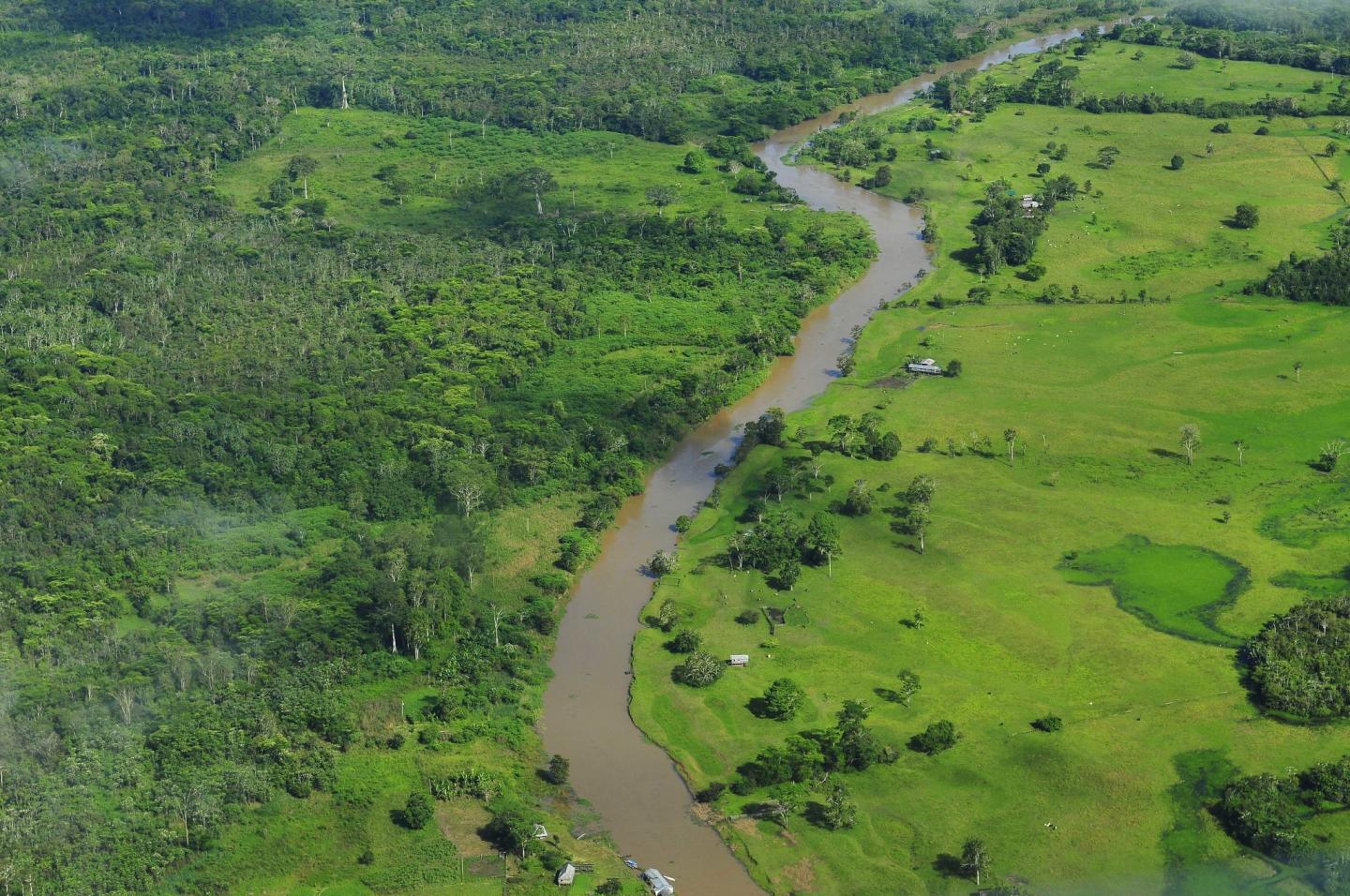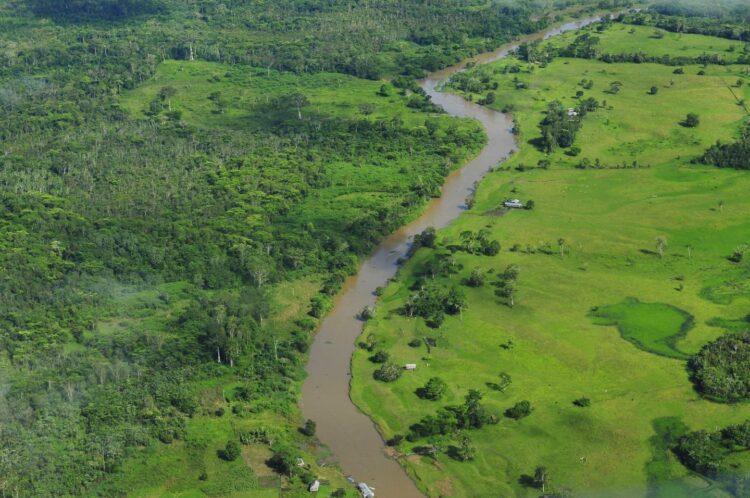New research on forest loss and degradation in Cameroon and Indonesia, and peatland degradation in Peru, can help countries better quantify greenhouse gas emissions. The research can guide emission-reduction targets under the Paris Agreement

Credit: Neil Palmer / International Center for Tropical Agriculture
Land use and land-use change are thought to be responsible for about 23% of human-caused greenhouse gas emissions. But nailing down this number with certainty has been hampered by a lack of data in many key regions of the tropics where forests are being replaced by agriculture and where other activities are degrading forests.
A large part of our uncertainty is related to what is happening in soils as a result of forest conversion to agriculture. Soils store about twice as much carbon as the atmosphere and they are responsible for regulating concentrations of two other important greenhouse gases – nitrous oxide, which is a greenhouse gas about 265 times more potent than carbon dioxide, and methane, which is the second most important anthropogenic greenhouse gas after carbon dioxide.
Improving the quantification of greenhouse gas emissions is needed for the implementation of climate change mitigation actions under the Paris Agreement. Many countries across the tropics have committed to reducing emissions in their agriculture and forestry sectors. Some of this will be done unilaterally, but some will be done through international cooperation, including through carbon markets.
The Alliance of Bioversity International and CIAT has been working with partners across the CGIAR to increase emissions data availability. In recent months, we published three papers with new primary data from sites across the humid tropics. Two studies looked at the conversion of forests to different types of agriculture on upland soils in Cameroon and on the island of Sumatra in Indonesia; the third study examined forest degradation in a tropical peatland from the unsustainable harvesting of palm fruits in Peru.
The consistent finding across these papers is that the conversion of forest to agriculture and forest degradation slows down the carbon and nitrogen cycles in these landscapes, which affects the flows of greenhouse gases between the biosphere and the atmosphere.
One of the gases we looked at was methane, and this is important because soil removes this greenhouse gas from the atmosphere and limits its climate impact. Our study in Cameroon found that conversion of humid forest to cropland reduced this removal by 47%, but conversion to a cacao plantation did not reduce removal. Our study in Sumatra found lower, but still important, removal rates compared to the forest that we observed in Cameroon.
Conversion of forest to rubber and oil palm plantations decreased greenhouse gas removal by soil to near zero.
Solving the missing methane mystery?
Methane is increasing in the atmosphere at an accelerated rate. The orders of magnitude of the reduction of the tropical forest methane removals that we observed suggest that deforestation may be contributing between 4% and 9% of this increase. This effect of land-use change is not integrated into global modeling studies and may account for some of the year-to-year variability in atmospheric methane accumulation.
In Peru, we looked at a contrasting situation in forested wetlands, which are a natural source of methane to the atmosphere because of the combination of high organic matter content of wetland soils and flooding conditions that limit oxygen levels in these soils.
We looked at forest degradation in a swamp area on peat soils (soils with very high organic matter content) and found that changes in forest structure and soil disturbance from unsustainable harvesting of Mauritia flexuosa palms was decreasing the natural source of methane from the region. Given the large-scale loss and degradation of wetlands across the tropics, this natural source may be decreasing, which means that the increase of methane in the atmosphere due to anthropogenic activities may be underestimated.
Nitrous oxide reductions – at first
For nitrous oxide, we also found that emissions were lower in the areas converted to agriculture, primarily because these soils were not being fertilized. In Cameroon, emissions decreased by 52% in recently converted cropland and by 35% in the agroforestry plantation. We published the results from Sumatra previously and showed a 40% reduction when forest was converted to oil palm and rubber plantations.
Continued removal of crops from these sites without nutrient replenishment will exacerbate nitrogen deficiencies and at some point and fertilization will be required to boost productivity. This will increase emissions and typically, emissions from fertilized systems exceed those of native vegetation.
We found equivocal results for nitrous oxide emissions in response to forest degradation in the Peruvian peatlands, with one degraded site showing much lower emissions than the intact forest and another showing similar emissions.
Agroforestry may maintain soil carbon levels
The third gas that we looked at was carbon dioxide and we looked in particular at soil respiration. Soil respiration is the efflux of carbon dioxide from soils and this comes from two sources: degradation of soil organic matter and root respiration. Soil respiration is the second most important carbon flux in ecosystems after photosynthesis and it indicates ecosystem productivity.
In Cameroon, conversion of forest to cropland resulted in a 43% reduction in soil respiration, and only a 20% reduction in the cacao plantation. In Sumatra, we saw no change in soil respiration with the conversion of forest to plantation crops, and oil palm had higher soil respiration rates than the forest site. Data on soil respiration in the Peruvian peatland degradation experiment are forthcoming.
In Sumatra, there was little loss in soil organic matter following conversion, which helped bolster soil respiration. We noted significant soil organic matter declines in Cameroon associated with lower soil respiration. These results suggest that maintenance of highly productive agroforestry systems may be a key to maintaining soil carbon stocks and reducing emissions from land-use change.
These studies and other papers that will be or have been produced from these sites will add three well-characterized sites to the body of knowledge across the humid tropics to support better modeling and better implementation of the Paris Agreement.
One of the important functions of applied science organizations like the Alliance is to provide data to support sound decision-making. We recognize that good data does not ensure good decisions, but lack of data guarantees that good decisions are hit-or-miss.
###
Media Contact
Sean Mattson
[email protected]
Related Journal Article
http://dx.





